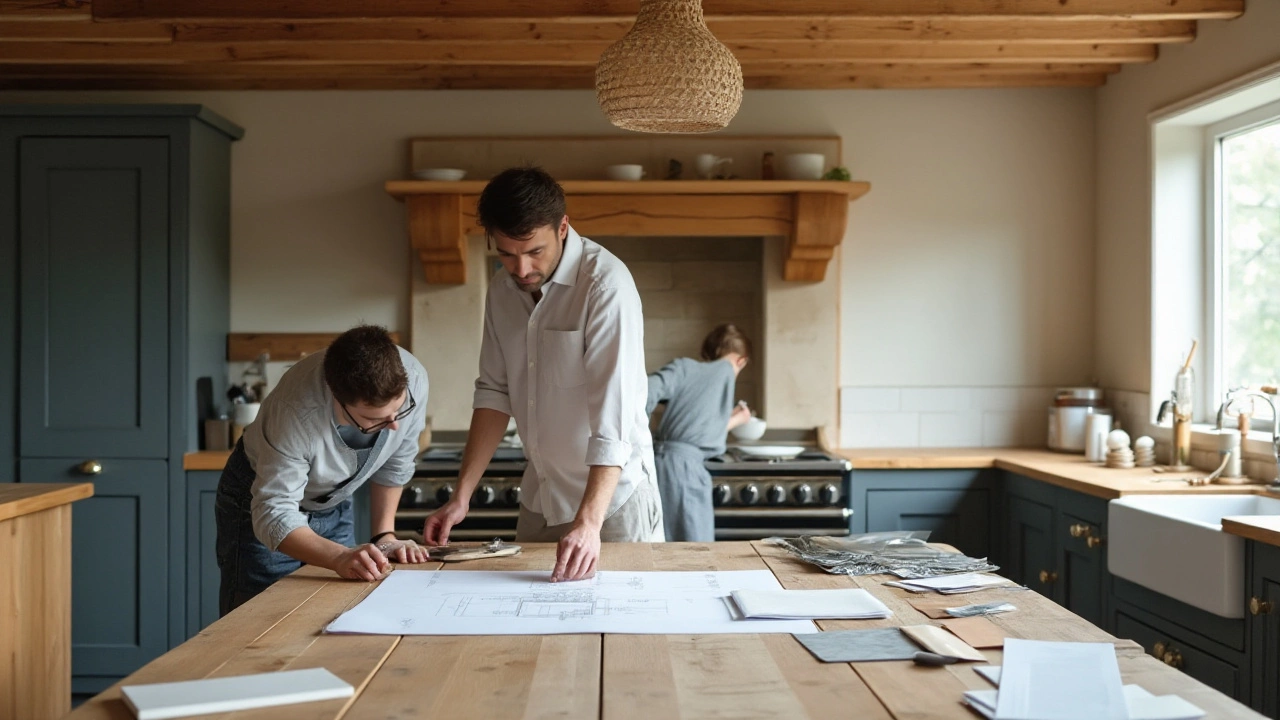Kitchen Fitting: What You Need to Know
Thinking about a new kitchen? You’ve probably heard the term “kitchen fitting” tossed around, but what does it actually mean? In plain English, kitchen fitting is the process of turning a bare space into a functional, looking‑good kitchen. It covers everything from measuring the room, installing cabinets, hooking up appliances, to finishing the floor and lighting. If you know the basics before you start, you’ll avoid costly surprises and end up with a space you love.
What Does Kitchen Fitting Include?
Most fitting jobs break down into three main stages: preparation, installation, and finishing.
Preparation starts with a detailed survey of the room. The fitter measures walls, floor height, and where doors and windows sit. Accurate measurements are the foundation of a smooth fit – a misplaced cabinet can throw off the whole layout.
Next comes the installation phase. This is where cabinets are fixed to the walls, countertops are set, and the sink, stove, and fridge are hooked up. Good fitters follow the manufacturer’s instructions and local building codes, especially for gas and electrical work. A solid, level base for the cabinets is essential; otherwise you’ll see gaps and uneven surfaces later.
The final finishing touches include fitting the splashback, installing handles, lighting, and any built‑in appliances. It’s also the time to check that doors open correctly, drawers glide smoothly, and all connections are sealed to avoid leaks.
How to Choose the Right Fitters
Not every handyman can do a full kitchen fitting. Look for a team that offers a complete service package – design, supply, and install – so you don’t have to juggle multiple contractors.
Ask for references and check online reviews. A reputable fitter will have photos of recent jobs and be happy to share them. Make sure they’re insured and, if electrical or gas work is involved, that they hold the proper licences.
Get at least three written quotes. The cheapest option isn’t always the best; compare what’s included – for example, does the quote cover waste removal, or will you pay extra for that?
Finally, trust your gut. A fitter who communicates clearly, shows up on time, and answers all your questions is worth the extra few pounds. Good communication prevents misunderstandings about timelines, material choices, and budget.
Do you want to save money by doing part of the work yourself? DIY can work for simple tasks like painting walls or assembling flat‑pack cabinets, but the plumbing, electrical, and heavy lifting are best left to professionals. Mistakes in those areas can lead to water damage or fire hazards, which cost far more than a professional’s fee.
When the kitchen is finally fitted, give it a quick once‑over. Open all doors, run water from the tap, test the oven, and check that lights switch on. If anything feels off, call the fitter immediately – most offer a warranty period to fix any snags.
In short, a successful kitchen fitting blends careful planning, skilled installation, and attention to detail. By knowing what’s involved, choosing the right team, and staying involved throughout the process, you’ll end up with a kitchen that works for you and looks great for years to come.

Kitchen Installation Costs: How Much Does It Really Take?
Dec 7, 2024, Posted by Damon Blackwood
Fitting a kitchen can be a significant undertaking, requiring careful financial planning and decision-making. The cost varies largely depending on the size of the space, the complexity of the design, and the materials chosen. Many factors can affect the final price, including labor costs, which differ based on geographic location. Understanding these variables can help you budget effectively and get the most from your kitchen investment.
MORESEARCH HERE
Categories
TAGS
- foundation repair
- commercial construction
- construction
- new builds
- home improvement
- home renovation
- bathroom renovation
- construction materials
- home foundation
- renovation tips
- residential construction
- building types
- contractor
- foundation cracks
- home construction
- architectural services
- building codes
- construction differences
- home inspection
- kitchen installation